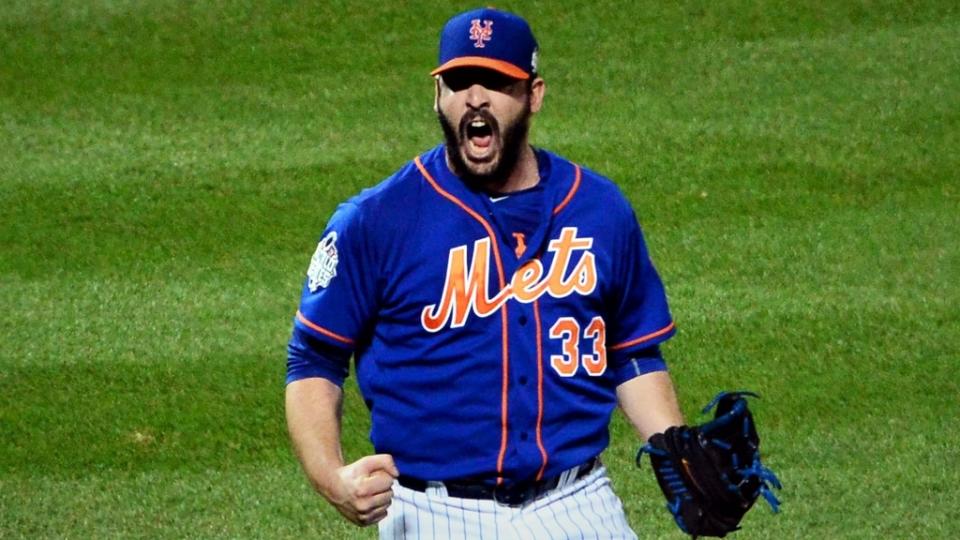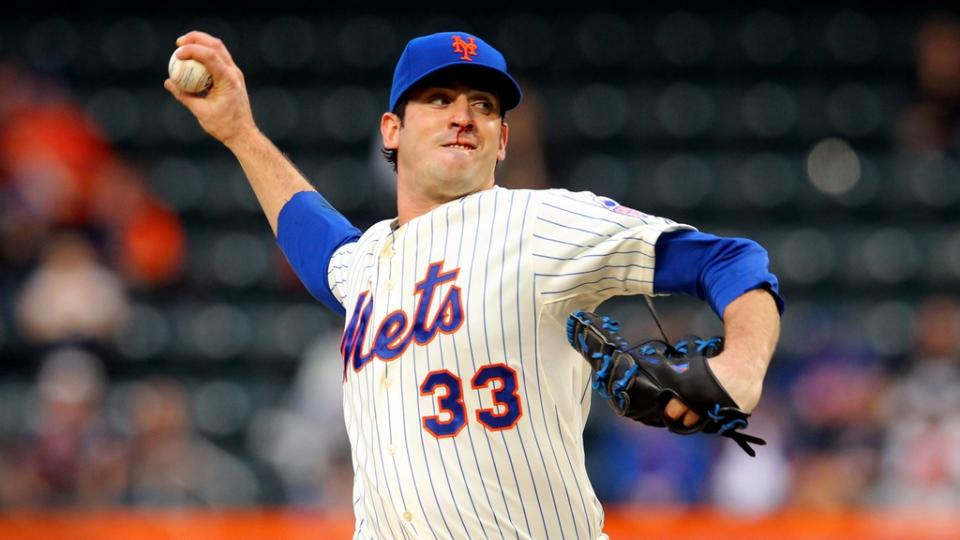Why Matt Harvey's career is Mets' biggest what-if in franchise history

Matt Harvey, who announced his retirement on Friday, burst on the scene for the Mets in Arizona against the Diamondbacks on July 26, 2012 as he began a rise that found him starting the All-Star Game at Citi Field a year later as he took over New York and embraced The Dark Knight moniker.
As Harvey dominated in 2013, there were the "Harvey's better" chants at Citi Field as the Mets faced Stephen Strasburg and the Washington Nationals, and there was the bloody nose game against the Chicago White Sox when Harvey was nearly perfect.
Then, late in the 2013 season, Harvey was derailed by Tommy John surgery. But his second act was just as dazzling as his first.
Harvey came back from surgery with a vengeance in 2015, and that season ended shortly after he walked off the mound in Game 5 of the World Series at Citi Field after delivering one of the best postseason performances in franchise history.
The way Game 5 and that series against the Kansas City Royals ended is a huge what-if. Without Jeurys Familia's quick-pitch in Game 1 and with some better defense in Game 4 and Game 5, it could've easily been the Mets winning in five games instead of the Royals.
But the biggest what-if is Harvey's Mets career.
What would have happened if he stayed healthy after 2015?
It can be argued that it's the biggest what-if in Mets history.

Before the screams start coming about Nolan Ryan, David Wright, Jacob deGrom, and Dwight Gooden, let's get this out of the way...
The Mets foolishly traded Ryan. His career was not taken away. Thus, he doesn't qualify as a career what-if the way Harvey does.
As far as Wright, he experienced a ton of success before injuries took him down, and he retired after a beloved career Met. While Wright was potentially on a Hall of Fame track before the injuries started, Harvey was on a potentially all-time great track.
When it comes to deGrom, he never embraced the city and did not want to be here anymore by the time he hit free agency after two injury-riddled seasons. Even if the Mets matched the offer from the Texas Rangers, he would've likely bolted. That's his what-if, not the Mets' what-if.
As far as Dwight Gooden and what might have happened had he not dealt with substance abuse issues, we'll unfortunately never know. But the electricity of his 1984 and 1985 seasons was starting to fade even in 1986.
But Harvey? Here's what he did during his first three seasons with the Mets as he used a blazing fastball to go along with a lethal slider, changeup, and curve combination:
2.53 ERA (2.65 FIP) and 1.00 WHIP with 449 strikeouts (9.5 per 9) in 427 innings over 65 games.

With how strikeout-happy the league has gotten over the last half decade, those strikeout totals don't jump out. But they're better than what deGrom's strikeout rate was over the first three years of his career when he whiffed 9.2 batters per nine.
And it's the Harvey and deGrom pairing (Harvey is younger than deGrom, by the way) that makes what happened to Harvey so hard to swallow -- and makes wondering what would've happened had he stayed healthy so tantalizing.
While Harvey and deGrom were teammates for parts of five seasons, only one of those seasons featured a healthy Harvey paired with deGrom.
That one season was 2015, when the Mets nearly won the World Series as Harvey, deGrom, and Noah Syndergaard led a vaunted rotation.
It all came crashing down for Harvey after that, and it wasn't because he enjoyed the New York City experience too much.
It was because his health betrayed him. Specifically, it was Thoracic Outlet surgery that robbed him of his Hall of Fame stuff and led him down a long road to retirement that included underwhelming stints with the Cincinnati Reds, Los Angeles Angels, Kansas City Royals, and finally the Baltimore Orioles.
Harvey was also suspended by MLB in May of 2022 following his disclosure of drug distribution during the trial of Eric Kay, who was found guilty of supplying drugs that led to the July 2019 death of Los Angeles Angels pitcher Tyler Skaggs.

When it comes to Harvey's injuries, they began right after the 2015 season, when he threw 216 combined innings between the regular season and postseason as he threw innings limits out the window with the Mets on their World Series run.
What would've happened in 2016, 2017, and 2018 had Harvey stayed healthy with the Mets forming a lethal top of the rotation with peak Harvey and peak deGrom?
Would Harvey still be a Met today?
Would he be well on his way to Cooperstown?
The Harvey who pitched in 2013 and 2015 was the most exciting Mets pitcher I ever saw. The combination of his stuff, emotion, and being the first glimmer of hope after a down half decade for the team created something incredibly special.
With Harvey now retiring from the game he loved, Mets fans should remember the thrills he gave them, wonder what might have been, and give him their respect and admiration for what he tried to do in 2015.

